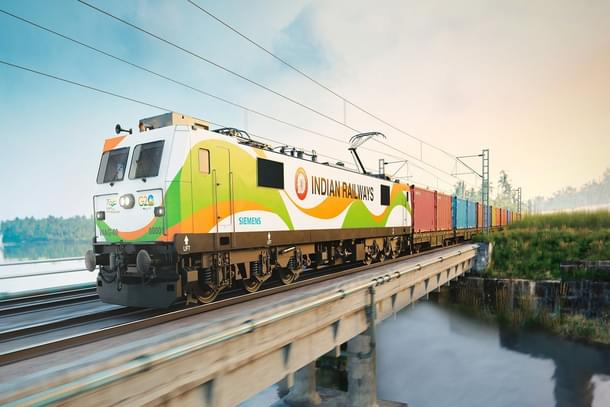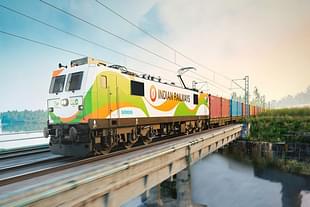Infrastructure
Kavach 4.0 Rollout On Fast-Track: Railways To Issue Tenders For 20,000 Locomotives This Year
V Bhagya Subhashini
Aug 08, 2024, 03:20 PM | Updated 03:20 PM IST
Save & read from anywhere!
Bookmark stories for easy access on any device or the Swarajya app.


The Union Ministry of Railways is set to fast-track the deployment of the latest version of its indigenous anti-collision system, Kavach 4.0, with plans to issue tenders for installation in 20,000 locomotives this year.
The Ministry intends to release two major tenders, each covering 10,000 locomotives, aiming to finalise one by October 2024.
"We sanctioned this capacity last month after Kavach 4.0 was approved by the Research Designs and Standards Organisation (RDSO). The goal is to establish a parallel system for seamless coverage," said Railway Minister Ashwini Vaishnaw. In addition to the locomotives, 3,000 route kilometers (Rkm) will also be equipped with the new system.
The existing network, currently operating on earlier versions of Kavach, will be upgraded to Kavach 4.0.
"In the next four years, Kavach will cover all types of geographical territories and locomotives. New-age locomotives are already coming equipped with Kavach 4.0. Within four years, we aim to have Kavach installed on 20,000 locomotives," the minister added, reports The Hindu Business Line.
Tenders have already been issued for the installation of Kavach on the Delhi-Chennai and Mumbai-Chennai sections, spanning 3,300 Rkm, along with key automatic sections covering an additional 5,000 Rkm.
Furthermore, Vaishnaw announced plans for a separate initiative to install the Kavach system at railway stations, aiming to cover approximately 8,000 stations. This move is intended to enhance communication between trains and stations, thereby improving overall safety.
The urgency to expand Kavach coverage has been amplified following the Kanchenjunga train accident in June 2024, which resulted in 11 fatalities. The absence of Kavach on the route highlighted the need for broader implementation.
This was the fourth major train accident in the past year, including the devastating triple-train collision in Balasore, Odisha, in June 2023, which claimed 293 lives. Notably, Kavach was not operational on any of these routes.
Presently, three Indian Original Equipment Manufacturers (OEMs) — HBL Power Systems, Kernex, and Medha — are approved for Kavach.
More manufacturers are developing the system and are in various stages of development. Being a safety system, Kavach approvals require meticulous testing at international standards before getting certified.
Indian Railways' Indigenous Anti-Train Collision System — 'Kavach'
Kavach was developed by the Research Design and Standards Organisation (RDSO) under Indian Railways. It has been adopted as the National Automatic Train Protection (ATP) System.
Its functionality relies on five subsystems. Alongside railway tracks, three subsystems — optical fibre network, towers with radio equipment, and RFID tags — are installed, while data centres are established at railway stations and integrated into the signalling system.
Additionally, each train and locomotive is equipped with another subsystem of Kavach. It aids loco pilots by automatically applying brakes if they fail to do so within specified speed limits, ensuring safe train operations even in inclement weather.
Since 2016, the Indian Railways has been carrying out field tests for Kavach on passenger trains, with further operational improvements in the works.
Other benefits include automatic speed control on approaching turnouts, signal aspect repetition in the cab (useful for high speeds and foggy weather), and automatic whistling at level crossing gates.
V Bhagya Subhashini is a staff writer at Swarajya. She tracks infrastructure developments.





